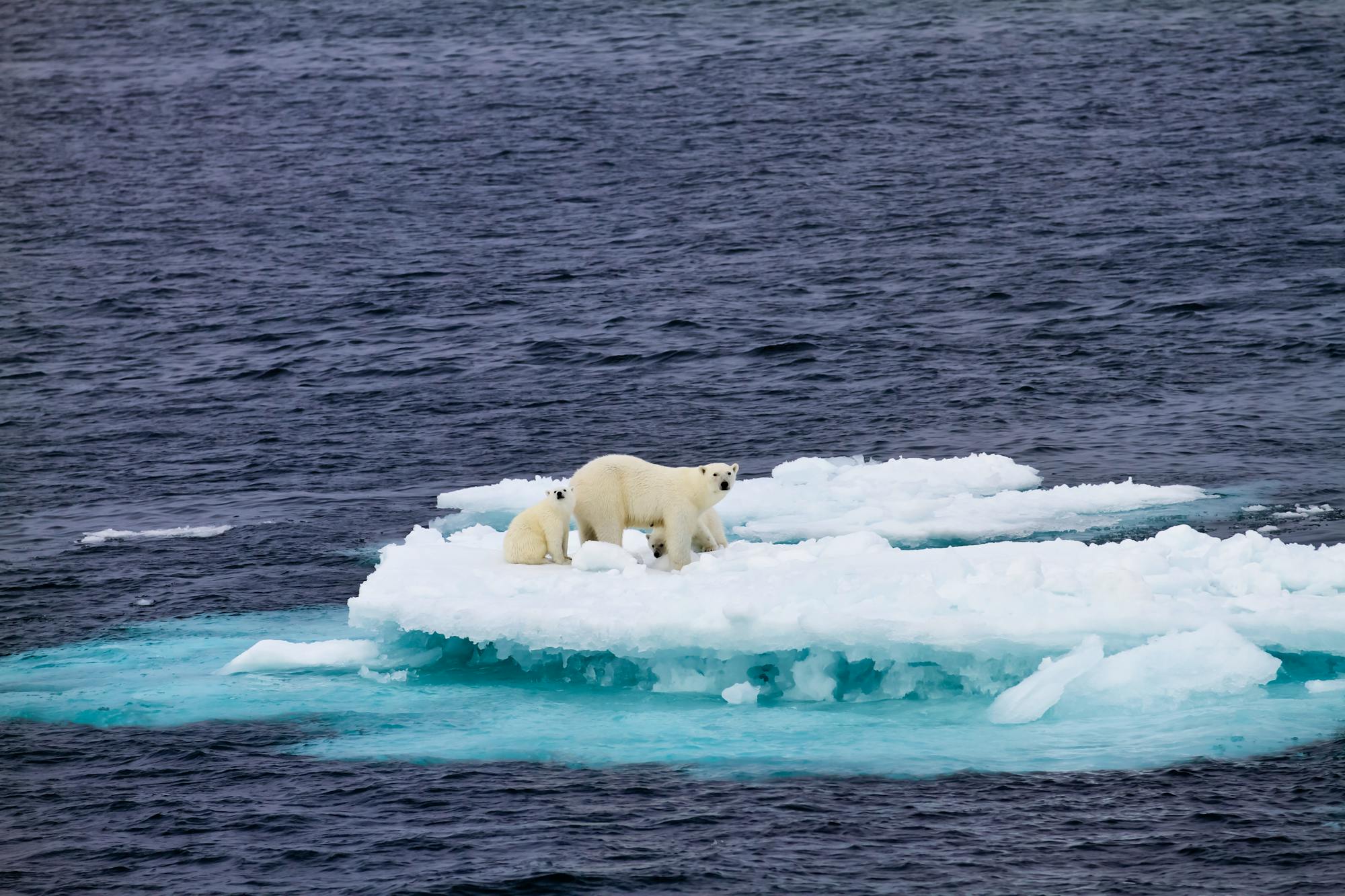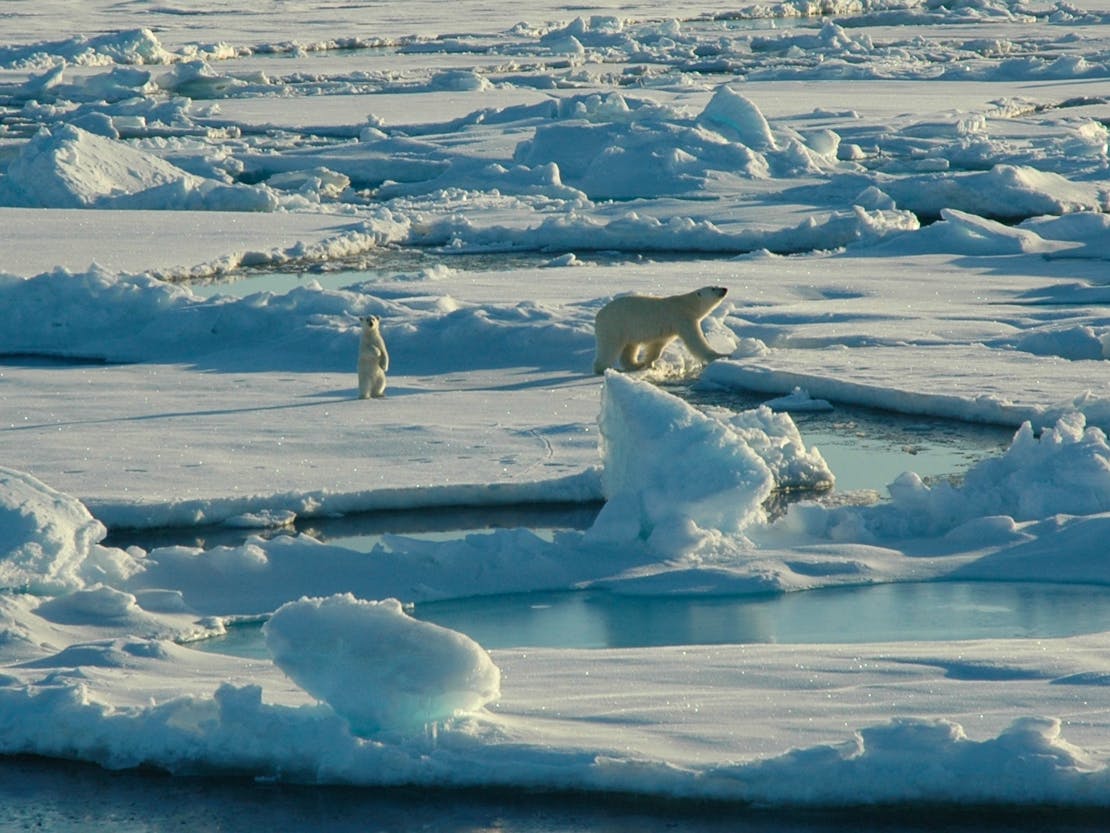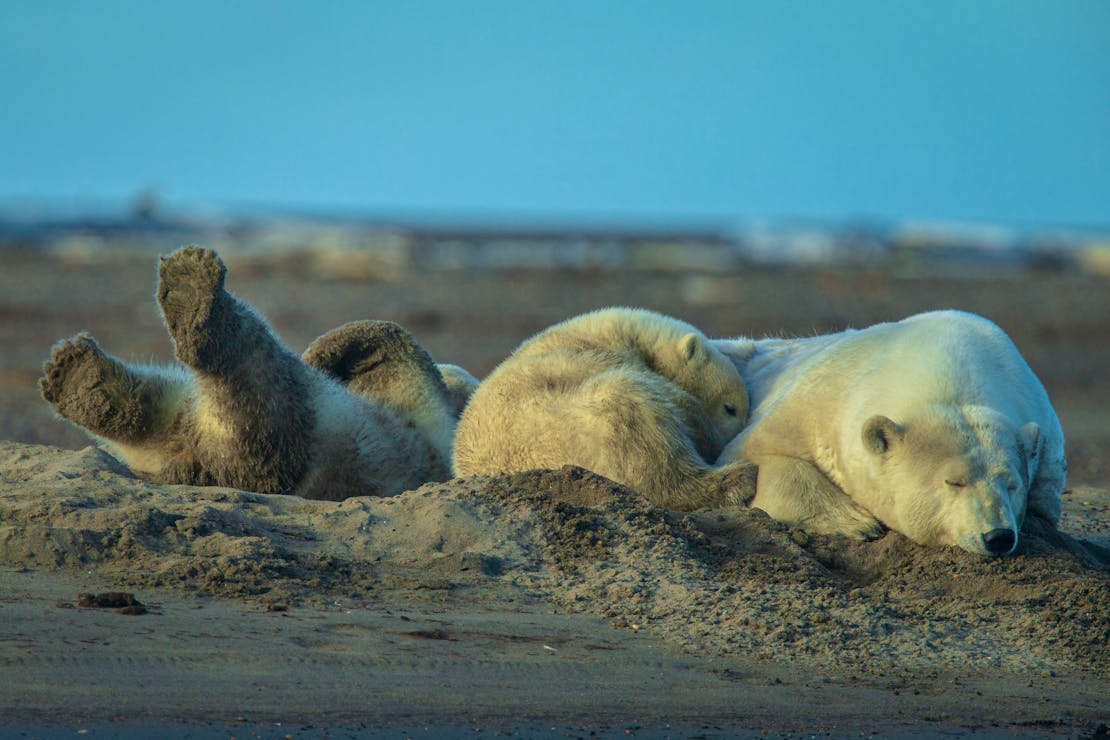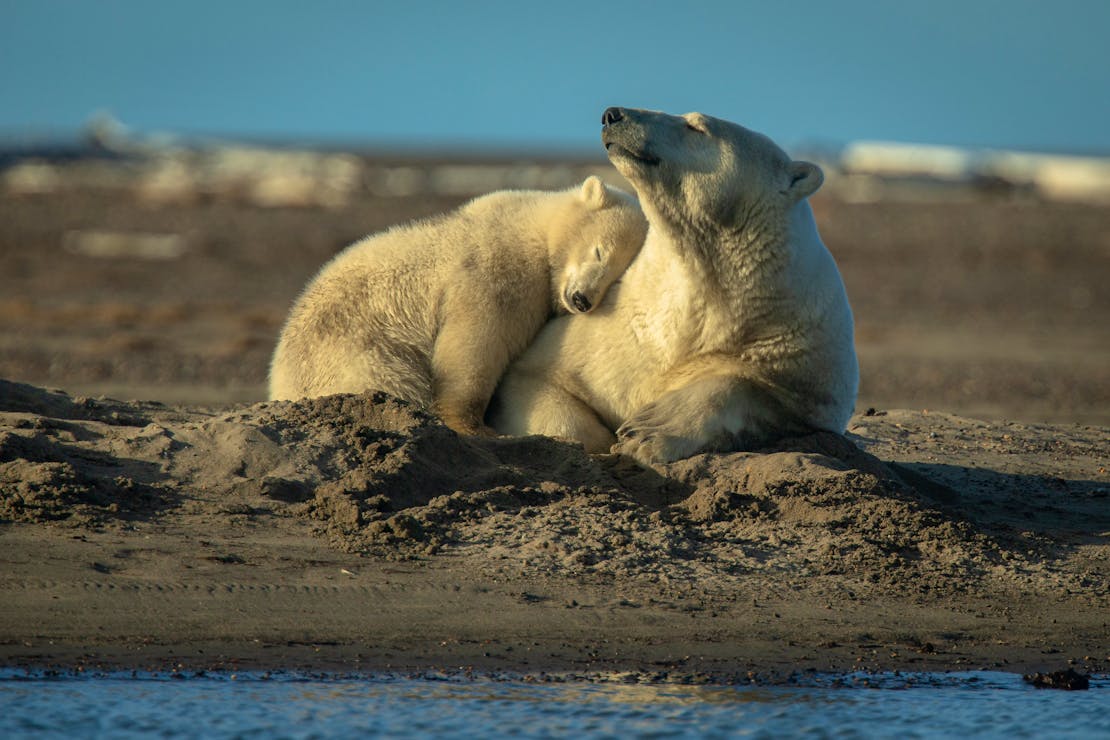It’s not quite spring yet. Right now, nursing polar bears, cuddling with their cubs in dens under Arctic snow, are in the midst one of the most vulnerable and remarkable reproductive feats in the animal kingdom.
Pregnant polar bears enter dens in the fall. After giving birth to one to three tiny, helpless cubs, they nurse for three or four months before emerging in the spring to hunt. In all, the mother bear goes eight months without eating or drinking – an act unrivaled by any other bear – and may lose around 30% of her body weight.
Why are polar bears endangered?
These remarkable creatures are now in grave danger of going extinct due to vanishing sea ice due to climate change and are protected as a threatened species under the Endangered Species Act. Yet, federal officials are actively considering two oil and gas-related policies putting additional pressure on already stressed polar bears and their Arctic world.
For many years, the U.S. Fish and Wildlife Service (FWS) has supported their regulation allowing the oil and gas industry to harass polar bears during exploration, development, construction and transportation activities. The U.S. Bureau of Land Management is now considering permitting ConocoPhillips to massively expand a sprawling oil field in Alaska’s western Arctic – known as the Willow Project – that would have devastating, irreparable impacts on polar bear habitat.
With only about 900 bears remaining, the Southern Beaufort Sea polar bear population that frequents Alaska’s Arctic coast is one of the world’s most imperiled polar bear populations. Based on agency conservation and recovery goals for the Southern Beaufort Sea population, even a single oil and gas-related death could impede the population’s recovery. While the Marine Mammal Protection Act generally prohibits killing, harming or harassing marine mammals, including polar bears, the statute allows for some exceptions. The federal government can authorize activities that non-lethally harm and harass marine mammals, as long as such activities will impact only a “small number” of animals and have no more than a “negligible impact” on the population.
The FWS as recently as 2021 approved a myriad of industrial activities in the region, including seismic blasting, well drilling, pipelines, truck and helicopter traffic and the construction and operation of roads, runways and other support facilities. Heavy equipment used in seismic exploration and drilling activities can crush polar bears in their dens or potentially scare mothers and cubs out too early, leaving them vulnerable to death from of exposure or starvation. It is also widely known that noise generated by routine oil operations can disturb polar bear behavior and increase stress.
It’s hard to believe the increasing number of volatile industrial activities won’t disturb or kill these defenseless denning polar bears and their cubs or that the cumulative effects of all these ground-disturbing activities won’t result in polar bear deaths. They can, and they do. Studies show that polar bears are remarkably attached to their dens. In nearly all cases, a mother polar bear will choose death over leaving her cubs alone. The FWS, however, denies these activities could result in any polar bear deaths.
Defenders of Wildlife and our partners are actively litigating the long-standing FWS regulation that allows oil and gas companies operating in the Beaufort Sea and Western Arctic to harass polar bears when drilling or searching for oil. Enough is enough. The regulation allowing non-lethal harassment flies in the face of the best available science as well as the obligations of the Marine Mammal Protection Act and the Endangered Species Act, powerful bedrock laws that the federal government is required to uphold.
The Willow Project
Not only would ConocoPhillips’ proposed expansion of the Willow project create additional stress for Arctic wildlife, but estimated carbon emissions associated with the field would completely negate carbon reductions elsewhere, accelerating climate change that threatens the Arctic and beyond. A study cited in the draft Environmental Impact Statement for the proposed expansion found that carbon emissions from the project would cause $19.8 billion—and potentially more—in climate change-related damages, compared with the meager $3.9 billion in new federal revenue that proponents claim will be generated by the project. Social costs of the project are estimated to be approximately $79 billion according to recent Environmental Protection Agency guidance.
So, while we don’t possess their incredible arctic adaptations, we all have something in common with polar bears. None of us can afford the additional physical, social and climate-related stresses posed by expanded arctic oil and gas activities. Even while making important commitments to address climate change on a grand scale, the Biden administration is still permitting irresponsible fossil fuel development in the Arctic that is not in the best interests of nature, the country or our future. Either way, it is a poor reflection on this administration and the American people are ill-served by it.
As a former FWS Director, I recognize that there are tough decisions to be made when balancing issues and conserving resources. But, bearing witness to polar bears at the brink of extinction, it’s crystal clear to me that we must forego additional Arctic oil development, allow for the recovery of these iconic bears and all the other species that depend on the fragile Arctic landscape and forge a new and better path forward.












